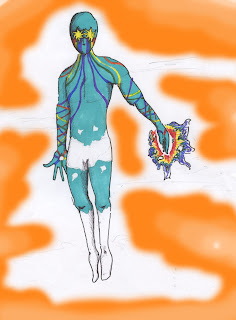6. Focus: You Can’t Do Both
This suggestion really speaks to me because I like being able to do it all. In high school, I acted in theater, played instruments in band, did a lot of graphic design work, and worked on video production stuff as well. This course was really nice because I got to do all of those things again, but I realize that now I have to make a decision and stick with it. first of all, there are always going to be people better than me at each thing. But if I don’t focus on getting good at just one thing then I will be making it easier for people to beat me out for jobs and positions. It’s really hard to give up something that you really care about and that you really enjoy doing, but at some point I have to realize that I am only hurting myself by doing that.
8. Freak: The Power of Uniqueness.
I really like to think that I am an unusual person. There are certain things that I can do that I like to think that no one can do better. Thats not true obviously, but I like to think it nonetheless. One thing I have noticed about uniqueness though is that it isn’t enough to be unique and exceptional. It helps so much to surround yourself with unique and exceptional people as well. If there is one thing that you are good at that’s great, but then there are so many areas that other people are exceptionally good at, and their input will help you out. Impressive creative works are not the product of one exceptional person doing exceptional things. Its a collection of multiple unique people who are doing exceptional parts of a greater exceptional whole.
4. Forget It: Don’t Try to Fix Your Weakness
This is very counter-intuitive. I always think of how to solve problems and face addicitons, and I remember that the first step is admitting you have a problem. So to say that that is also the last step confuses me. But it makes sense. At some point, if we are too obsessed with fixing our weaknesses, we could be consumed by always trying to fix ourselves. Because we will always be able to find something wrong with ourselves, and we will not be able to fix it all. Now I do disagree with some of Rendall’s reasons for why we shouldn’t try to fix our weaknesses, especially the second reason: it’s painful. I think to some extent, if you know that something is wrong with you and then you choose to ignore it, you’re just being lazy and weak. Even if something is painful, its better to suck it up, and do whats best for yourself. If its fixing the weakness then do it. If its not, then don’t. But I don’t see this step as something that always applies.
My own strengths and weaknesses? Well I think that my strengths often are my weaknesses in terms of creativity. On one hand, I think that it’s a good thing that I like to be involved, and get things done. On the other hand, I don’t do that great of a job of recognizing my own limitations or leting other people help me with things. Even in group projects, I sometimes have a tendency to try to do things on my own. I think another strength I have is my dedication to things. However this can also be a weakness. I have stuck to things and agreed to do things for people and then realized later that its either a waste of my time, its taking time away from more important things, or it’s just going nowhere. But I have a hard time stepping away from things like that. If I’m going to dig my self into a hole, I am going to dig as deep of a hole that I can make.




